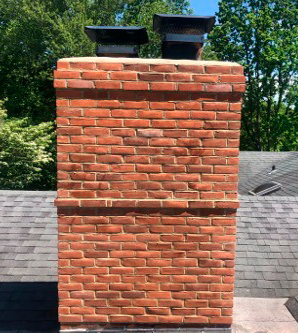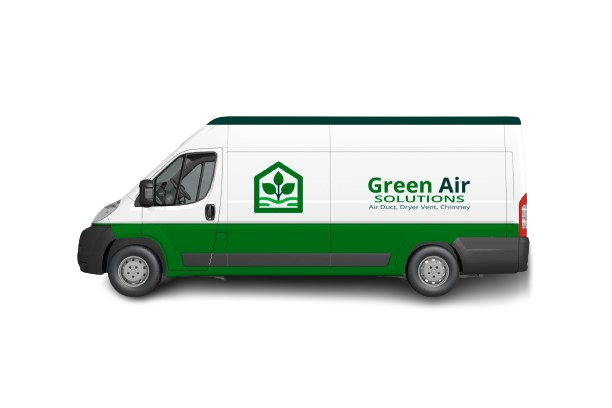Home » Chimney Sweep
Chimney Sweep
Texas Trusts Us for Top-Notch Chimney Care!
- Reliability
- Communication Skills
- Adaptability
Contact our team today!
Chimney Sweep Services
Maintaining a safe and efficient fireplace or wood-burning stove is essential for any homeowner. One crucial aspect of this maintenance is chimney sweeping. Over time, chimneys can accumulate soot, creosote, and other debris, which can pose significant safety risks if not regularly cleaned. Professional chimney sweep services help ensure that your chimney operates safely and efficiently, reducing the risk of fire hazards and improving indoor air quality.
In this article, we will explore the importance of chimney sweep services, what the process involves, and why regular maintenance is vital for homeowners.
Understanding Chimney Sweep Services
What is Chimney Sweeping?
Chimney sweeping is the process of cleaning the interior of a chimney to remove soot, creosote, and other debris that can accumulate over time. Creosote, a byproduct of burning wood, is highly flammable and can cause chimney fires if not regularly cleaned. The chimney sweeping process typically involves using specialized brushes, rods, and vacuums to dislodge and remove these buildups, ensuring a clear and safe passage for smoke and gases to exit the home.
Professional chimney sweeps are trained to perform thorough inspections and cleanings, ensuring that every part of the chimney, from the flue to the smoke chamber, is free of obstructions and dangerous buildup. This not only enhances the safety of your home but also improves the efficiency of your fireplace or stove.
Importance of Regular Chimney Sweeping
Regular chimney sweeping is crucial for several reasons:
Fire Hazard Prevention: The accumulation of creosote and soot in the chimney can create a significant fire hazard. Creosote is highly flammable, and even a small amount can ignite under the right conditions. Regular chimney sweeping reduces this risk by removing the buildup, ensuring a safer home environment.
Improved Air Quality: A blocked or dirty chimney can cause smoke and harmful gases, such as carbon monoxide, to back up into your home. This can lead to respiratory issues and other health problems for your family. Regular chimney cleaning ensures that smoke and gases are properly vented outside, maintaining good indoor air quality.
Enhanced Efficiency: A clean chimney allows your fireplace or stove to operate more efficiently. When the chimney is free of obstructions, the draft works better, ensuring that your fire burns hotter and more efficiently. This can lead to better heating performance and reduced energy costs.
Prolonged Chimney Lifespan: Regular maintenance, including chimney sweeping, can extend the lifespan of your chimney. Removing corrosive substances like creosote prevents damage to the chimney liner and other components, reducing the need for costly repairs and replacements.
In summary, regular chimney sweeping is an essential maintenance task that helps prevent fires, improves air quality, enhances the efficiency of your heating system, and prolongs the life of your chimney. By investing in professional chimney sweep services, you can ensure a safer, healthier, and more efficient home.
Looking for a professional to clean your Chimney?
Complete the form to receive a free estimate!
Benefits of Professional Chimney Sweep Services
Improved Safety
One of the most significant benefits of professional chimney sweep services is the improved safety they provide. Over time, chimneys can accumulate a buildup of soot, creosote, and other debris. Creosote is particularly dangerous because it is highly flammable. Even a small accumulation can ignite and cause a chimney fire, which can quickly spread to other parts of your home. Professional chimney sweeping removes these hazardous materials, reducing the risk of fire.
In addition to fire hazards, a blocked or dirty chimney can cause dangerous gases, such as carbon monoxide, to back up into your home. Carbon monoxide is a colorless, odorless gas that can cause serious health issues and even death. Regular chimney sweeping ensures that these gases are properly vented outside, reducing the risk of carbon monoxide poisoning and keeping your home safe.
Enhanced Efficiency
Cleaning your chimney regularly improves the efficiency of your fireplace or heating system. When the chimney is clear of obstructions, it allows for better airflow and a stronger draft. This means your fire burns hotter and more efficiently, providing better heat output. Improved efficiency can also lead to reduced energy costs, as a well-maintained chimney helps your heating system work more effectively and burn less fuel.
Prolonged Chimney Lifespan
Regular chimney sweeping can extend the lifespan of your chimney. Creosote and other corrosive materials can damage the chimney liner and other components over time. By removing these substances, you prevent deterioration and reduce the need for costly repairs or replacements. Consistent maintenance ensures that your chimney remains in good condition, allowing it to function properly for many years.
Early Problem Detection
Professional chimney sweeps are trained to spot potential issues during the cleaning process. This early detection is crucial because it allows you to address minor problems before they become major repairs. Cracks, blockages, or structural damage can be identified and fixed promptly, saving you time and money in the long run. Regular inspections and cleanings help ensure that your chimney remains safe and functional.
How Often Should You Schedule Chimney Sweep Services?
General Recommendations
The frequency of chimney sweeping depends on several factors, but a general rule of thumb is to have your chimney professionally cleaned and inspected at least once a year. This annual cleaning helps maintain the efficiency and safety of your fireplace or stove. For those who use their fireplace or wood-burning stove frequently, more frequent cleanings may be necessary.
Factors Affecting Cleaning Frequency
Several factors can influence how often you need to schedule chimney sweep services:
- Usage: The more frequently you use your fireplace or stove, the faster creosote and soot will accumulate. Homes that use their fireplaces daily or burn large amounts of wood may require cleaning more than once a year.
- Type of Fuel: Different fuels produce different amounts of creosote. Burning unseasoned wood or softwoods like pine can produce more creosote and require more frequent cleanings. Hardwoods like oak and maple produce less creosote.
- Age and Condition of Chimney: Older chimneys or those in poor condition may need more frequent inspections and cleanings to ensure they remain safe and functional.
- Ventilation: Poor ventilation can lead to faster buildup of creosote and other debris. Ensuring proper airflow can help reduce the frequency of necessary cleanings.
The Chimney Sweep Process
Initial Inspection
The initial inspection is a critical first step in the chimney sweeping process. This inspection helps identify the extent of soot and creosote buildup, as well as any structural issues or blockages within the chimney.
Importance of Initial Inspection:
- Safety Assessment: Identifies potential fire hazards and ensures that the chimney is safe to use.
- Customized Cleaning Plan: Helps create a tailored cleaning plan based on the specific needs of the chimney.
- Problem Detection: Detects any issues, such as cracks, blockages, or animal nests, that need to be addressed before cleaning.
Steps of the Initial Inspection:
- Visual Examination: The chimney sweep visually inspects the exterior and interior of the chimney using flashlights and cameras.
- Creosote Buildup Check: The level of creosote buildup is assessed to determine the necessary cleaning techniques.
- Structural Integrity Check: The chimney is checked for any structural damage or wear that might require repair.
- Documentation: Findings are documented to guide the cleaning process and address any identified issues.
Cleaning Techniques and Equipment
Professional chimney sweeps use a variety of techniques and specialized equipment to ensure a thorough cleaning of the chimney.
Common Methods and Tools Used:
- Brushes: Chimney brushes of various sizes and shapes are used to scrub and dislodge soot and creosote from the chimney walls.
- Rods: Flexible rods are attached to the brushes to extend their reach and clean the entire length of the chimney.
- Vacuums: Industrial-grade vacuums are used to capture and remove the dislodged debris, preventing it from entering the home.
- Chemical Cleaners: In cases of heavy creosote buildup, chemical cleaners may be used to dissolve the deposits.
- Cameras: Video cameras are sometimes used post-cleaning to ensure all debris has been removed and to inspect for any remaining issues.
Cleaning Process Steps:
- Preparation: The area around the fireplace is protected with drop cloths to prevent soot and debris from spreading.
- Dislodging Debris: Brushes and rods are used to scrub and dislodge soot and creosote from the chimney walls.
- Vacuuming: High-powered vacuums remove the dislodged debris from the chimney.
- Inspection: A follow-up inspection ensures the chimney is thoroughly clean and free of obstructions.
Post-Cleaning Maintenance
After the chimney has been cleaned, ongoing maintenance steps are essential to keep it in good condition and ensure continued safe operation.
Steps Taken After Cleaning:
- Filter Replacement: If applicable, any filters in the chimney system are replaced to ensure optimal airflow.
- Seal Inspection: The chimney sweep checks and seals any cracks or gaps in the chimney to prevent future damage and improve efficiency.
- Homeowner Education: Homeowners are educated on best practices for maintaining a clean chimney, such as burning seasoned wood and scheduling regular inspections.
- Scheduling Future Cleanings: Recommendations are made for future cleaning intervals based on the chimney’s usage and condition.
In conclusion, regular chimney sweep services are vital for maintaining the safety, efficiency, and longevity of your chimney. Understanding the importance of chimney sweeping, the benefits it offers, and the process involved can help homeowners make informed decisions about their chimney maintenance needs.
Why You Should Choose Us
Discover why choosing us means choosing unparalleled quality, expert service, and unmatched customer satisfaction.

Get a Free Consultalion >>>>
24/7 Availability
Our services are available 24/7, ensuring reliable support and assistance anytime you need it.
Experienced Team
Our team is highly experienced, offering expert service backed by years of proven industry success.
Satisfied Customers
We pride ourselves on a long history of satisfied customers who trust us for reliable and quality service.
Quality Assurance
We ensure top quality with rigorous assurance processes, guaranteeing satisfaction in every service we provide.








What Our Clients Say
Read what our clients have to say about our exceptional service and dedication to excellence.




Frequently Asked Questions
FAQs provide quick answers to common questions about our air duct, chimney, and dryer vent cleaning services in Texas.
It is recommended to have your chimney cleaned at least once a year, particularly if you use it regularly during the heating season. More frequent cleanings may be necessary if you burn wood often or use types of wood that produce more creosote.
Signs that your chimney needs cleaning include noticeable soot buildup, a strong odor coming from the fireplace, smoke entering the room instead of rising up the chimney, and an unusual amount of wood consumption.
Yes, a dirty chimney can lead to health problems by allowing harmful gases, including carbon monoxide, to enter your home due to poor ventilation. Regular cleaning helps ensure these gases are safely vented outside.
Creosote is a sticky, flammable substance that builds up in the chimney flue when wood is burned. It can ignite under high temperatures, leading to chimney fires. Regular cleaning minimizes this risk.
A typical chimney sweep service can take between 1 to 3 hours depending on the condition and size of the chimney. Additional repairs or issues may extend this time.
To prepare for a chimney sweep’s visit, ensure that the area around the fireplace is clear of furniture and valuables for easy access. It’s also helpful to not use the fireplace for at least 24 hours before the scheduled cleaning.essionals who have undergone extensive training in air duct, chimney, and dryer vent cleaning.
During a chimney cleaning, the sweep will clean the chimney flue, firebox, smoke chamber, and damper with specialized tools to remove soot, creosote, and any obstructions. They will also perform a visual inspection to identify any potential issues.
Yes, professional chimney sweeps are typically certified by organizations such as the Chimney Safety Institute of America (CSIA). Certification matters because it ensures that the sweep has received proper training and adheres to industry standards, providing safer and more effective service.
Service Areas
Austin
- Downtown Austin
- East Austin
- South Congress
- South Lamar
- Travis Heights
- Barton Hills
- Zilker
- Hyde Park
- North Loop
- Allandale
- Crestview
- Brentwood
- Mueller
- Windsor Park
- Cherrywood
- Tarrytown
- Westlake Hills
- Clarksville
- Old West Austin
- Rosedale
- Bouldin Creek
- Circle C Ranch
- West Congress
- South Manchaca
- St. Edwards
- Pleasant Valley
- Montopolis
- Northwest Hills
- Pflugerville
- Scofield Farms
- Balcones Woods
- Anderson Mill
- Jollyville
- Wells Branch
- Lakeway
- Bee Cave
- Steiner Ranch
- Avery Ranch











